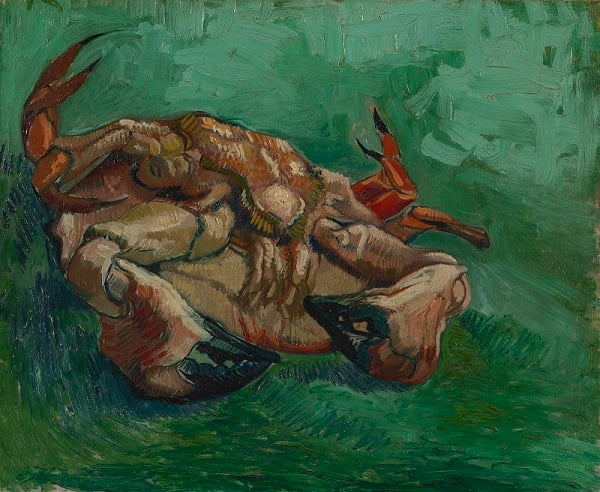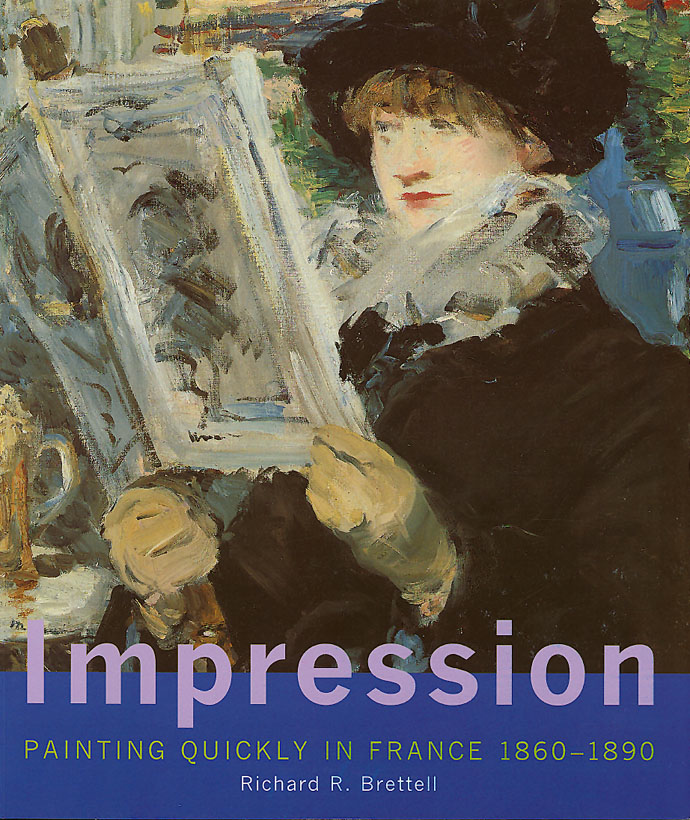
june 17–september 9, 2001
Vincent van Gogh and the Post-Impression
Vincent van Gogh (1853-1890) was the chief advocate of the Impression in the last decades of the century, although others such as Monet, in his vivacious Poplars on the Epte, or Pissarro, in his The Boulevard Montmartre at Night, occasionally returned to the rapid handling of their earlier work. Van Gogh's Crab on its Back and Entrance to a Quarry, with their quickly painted linear brushstrokes, celebrate the aesthetic of the Impression, a bold statement at a time when artists such as Gauguin and Cézanne were earning critical acclaim for their slowly executed paintings. Van Gogh's adherence to this style of painting influenced other powerful vanguard forms of action painting, including Fauvism, German Expressionism, and the New York action painting of the 1950s.

Vincent van Gogh and the Post Impressionism
Crab on its Back
1889
Oil on canvas
15 x 18 1/4 inches
Van Gogh Museum (Vincent van Gogh Foundation), Amsterdam

The "point" of Impressionist art was to capture the fleeting moment, the transient effect of a certain place, person, or time. Impressionist artists worked on-site with speed and directness, hoping to distinguish their works with a new freshness, immediacy, and truthfulness. Yet the paintings they exhibited were in fact almost always completed in the studio later. This beautifully illustrated book investigates for the first time the works that might truly be called "Impressions"—paintings that appear to be rapid transcriptions of shifting subjects but were nonetheless considered finished by their makers. Renowned Impressionist scholar Richard R. Brettell identifies and discusses Impressions by some of the best-known artists of the period, including Manet, Monet, Renoir, Sisley, Morisot, Degas, Pissarro, and Caillebotte.
The book surveys the various practices of individual artists in the making, signing, exhibiting, and selling of Impressions. Brettell discusses the pictorial theories behind the paintings, the sales strategies for them, and the various forms they took, including works completed in one sitting, "apparent" Impressions, and repeated Impressions. In a concluding chapter, the author considers a small group of works by Vincent van Gogh, who painted with an almost fanatical rapidity and was the only major Post-Impressionist painter to push the aesthetic of the Impression even further.
This book is the catalogue for an exhibition at the National Gallery in London from November 1, 2000, to January 28, 2001, the Van Gogh Museum in Amsterdam from March 2 to May 20, 2001, and the Clark Art Institute from June 17 to September 9, 2001.
240 pages, 9 3/8 x 11 inches
183 color and six black-and-white illustrations
2000
Published in association with Yale University Press
ISBN 0-300-08446-3 (hardcover)
ISBN 0-300-08447-1 (softcover)
